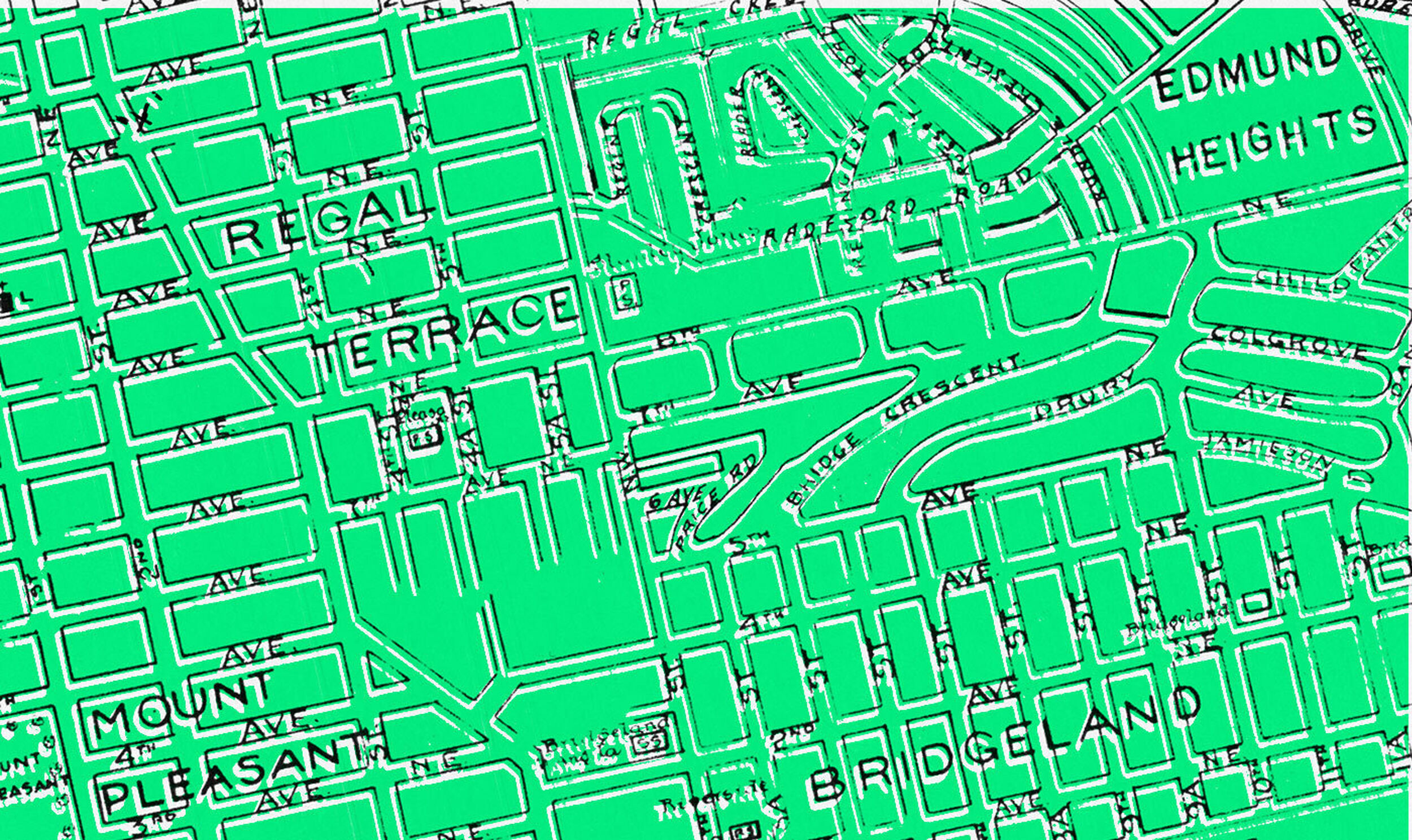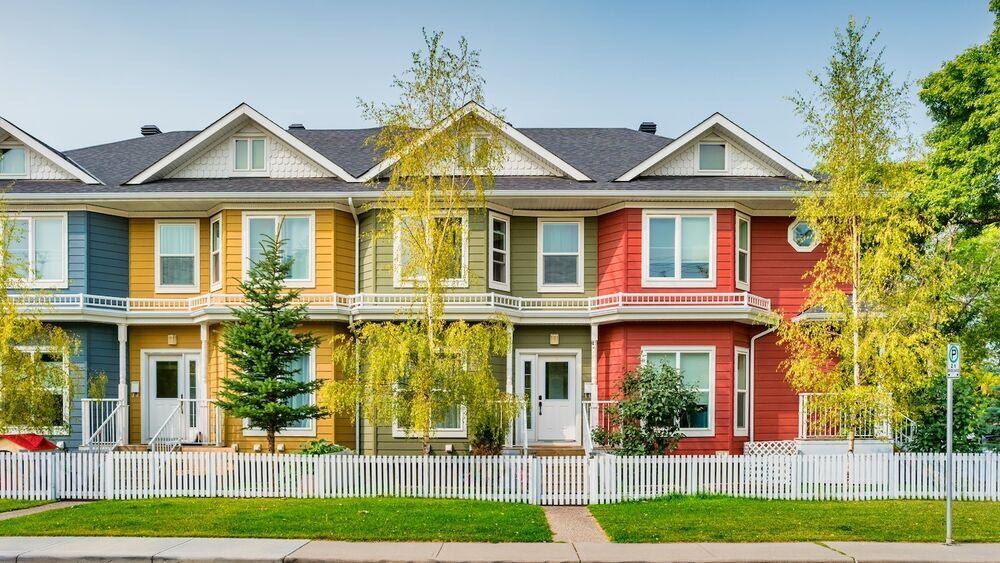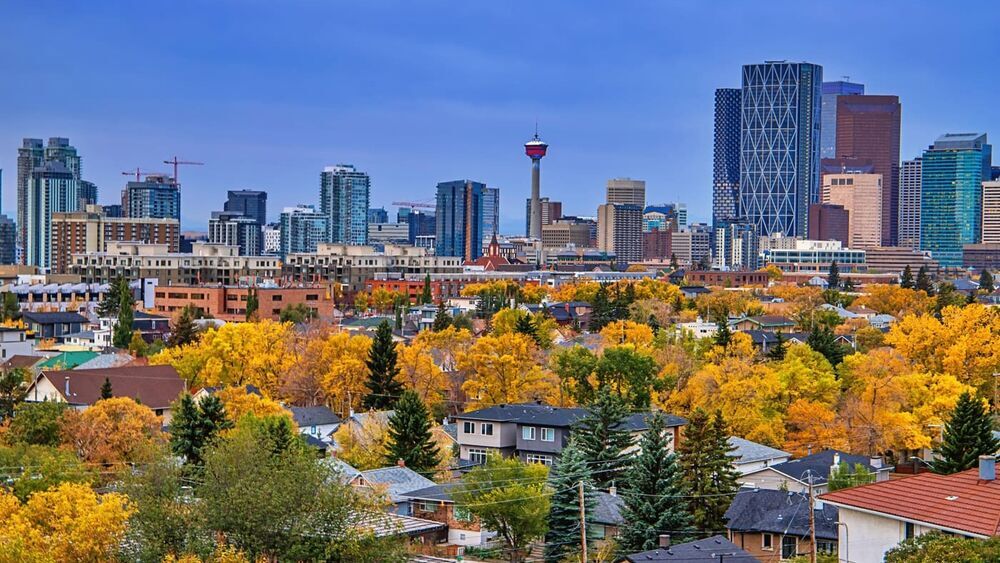
From a 1955 map of Calgary.
If NIMBYs had their way in the 1950s, my home wouldn’t exist
But I live here now — and I’m grateful.
Support in-depth Calgary journalism.
Sign Me Up!We connect Calgarians with their city through in-depth, curiosity-driven journalism—but we need your help! We rely on our readers and listeners to fund our work by pitching in a few dollars a month. Join us by becoming a Sprawl member today!
If the residents of my neighbourhood had their way in the 1950s, I wouldn’t live where I do today.
My family lives in a big inner-city townhouse complex. When we moved from one end of it to the other a couple years ago, I joked that we’d moved to the suburbs. But when it was built—some 170 units of affordable rental housing, adjacent to blocks of single family homes—it sort of was like the ’burbs, with 16 acres of undeveloped land.
Our housing complex is the sort of project that, were it proposed today, would make people go berserk. They would fight it. They would complain about property values. They would warn that it would spoil the neighbourhood.
And that’s exactly what people did in 1953.
At the time, the Renfrew Community Association expressed solidarity with hundreds of single-family homeowners (and some renters, too, interestingly) who wanted to block the new housing project. The neighbourhood brought a petition to city hall that read: “As a resident of the Renfrew district of Calgary, I am emphatically opposed to cheap, multi-family housing in close proximity to my home.”
Nowadays you can’t outright say that, of course. Such open classism is frowned upon. It needs to be couched and coded: Today we speak of preserving the area’s “character.”
The wording has changed but the sentiment is the same.
Which brings us to the Guidebook for Great Communities, which goes to council next Monday.
The conversation we should be having
The guidebook is city hall’s latest policy attempt to shift how the city grows. Simply put, Calgary’s car-reliant sprawl is a fiscal and environmental time bomb. The guidebook is meant to stave off the damage somewhat by introducing new Local Area Plans to guide redevelopment in existing neighbourhoods, shifting growth inward.
Previous city documents to this end have fallen short of their aspirations. ImagineCALGARY, Plan It, the city’s climate plan—all of them envisioned a more sustainable city, and yet business as usual has more or less continued. We blew our climate targets. City council approved 14 new communities. The Green Line is in constant limbo.
Simply put, Calgary’s car-reliant sprawl is a fiscal and environmental time bomb.
Given this track record, it only makes sense to ask, as Ximena Gonzalez did in The Sprawl this week, if the guidebook will really deliver the “great communities” that it envisions. Previous policies promised big change on paper but fell short in reality—so how will this one be different?
As one astute Sprawl reader pointed out, that’s the conversation we should be having.
But we’re stuck in a rut in this city, rehashing old debates thanks to noxious NIMBY arguments and groups who seek to inflame the public. The usual suspects are warning that the guidebook will ruin otherwise good communities.
This resistance taps into a common feeling: I like my neighbourhood how it is, and I don’t want it to change. But beneath that seemingly innocuous sentiment can be something more sinister.
Who do neighbourhoods belong to?
“This idea of character is both toxic and vague,” wrote Alex Bozikovic, the Globe and Mail’s architecture critic, earlier this month. “It was born a century ago out of naked prejudice against racialized people, renters and any household arrangement that didn’t include husband, wife and children. Somehow, this legacy is still with us.”
In Calgary, you can look at Victoria Park, where in 1920 white residents petitioned to keep Black families out of the neighbourhood. In recent years, there have been countless fights against low-income housing and other projects like recovery facilities in neighbourhoods. Until recently, it was normal for Calgarians to go before city council to fight against individual basement suites. And Calgary remains rife with anti-renter sentiment.
Calgary’s neighbourhoods are increasingly segregated by income, and much of our community life is still marked by fear and paranoia. Right now, posted around my neighbourhood, are flyers that are reminiscent of what residents were saying in 1953.
“The City has plans to allow six storey buildings on our residential streets!” reads one poster. “This will directly impact our neighbourhood lifestyle and property value.” (As someone who has lived in the community for over a decade, I have no idea what our “neighbourhood lifestyle” is, and how such a building would change it.)
I was heartened to see that, on one of the posters, someone scrawled an arrow pointing to a rendering of a building and wrote: “People will live here.”
Calgary’s neighbourhoods are increasingly segregated by income, and much of our community life is still marked by fear and paranoia.
This raises an interesting question. Who do neighbourhoods truly belong to: the people who happen to live there now, or the people who will (or could) live there in the future? Or, for that matter, the people who lived there in the past?
Or all of the above?
We are understandably biased toward the present. But why should 2021 be considered the ideal state of the neighbourhood that should be locked in time, any more than 1953, or 1850, before Treaty 7 was signed? The notion that what’s in front of us is a place’s default condition is an absurdly ahistorical view. Our city is relatively new. People built it this way. Our neighbourhoods are constantly in flux—welcoming some people in, and keeping others out.
Building the city of the future
In 2000, the townhouse complex I live in was refurbished, expanded by 115 units, renamed, and the units sold. Today our homes are an example of what’s known as “missing middle” housing—the kind of multi-family housing that fell out of vogue in the last half of the 20th century, when the single-family detached home dominated cities.
One of the goals of the guidebook is to promote a variety of housing types in neighbourhoods, creating more choice. Without this “missing middle” housing in our neighbourhood, we wouldn’t live here. And I’d like to think that we dwellers of multi-family housing don’t detract from the rest of the neighbourhood, but enrich it.
I’ve been thinking a lot about how there’s no way this place would be approved today, not without major strife. But here’s another way of looking at it: By making decisions for the good of future Calgarians—not just the irate ones who happened to be banging on the door at the moment—the civic leaders of 1953 helped create the belonging that my neighbours and I experience in our neighbourhood today.
For that, I’m grateful.
Jeremy Klaszus is editor-in-chief of The Sprawl.
Support in-depth Calgary journalism.
Sign Me Up!We connect Calgarians with their city through in-depth, curiosity-driven journalism—but we need your help! We rely on our readers and listeners to fund our work by pitching in a few dollars a month. Join us by becoming a Sprawl member today!


